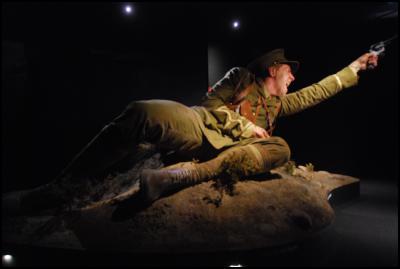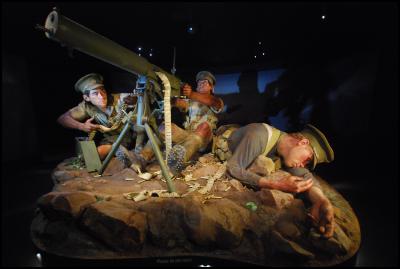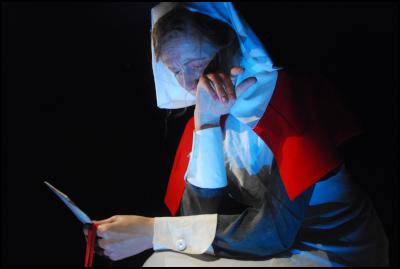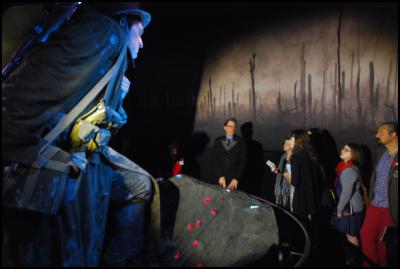Gallipoli: The Scale of Our War - Review
Photos and review by Francis Cook
Te Papa and Weta Workshop have worked together to create an impressive exhibition which skirts the edges of glorification and commemoration to deliver an experience both moving and disorienting. Thoughts and images below.
The central focus of the exhibit is the six rooms holding expertly crafted human figures at 2.4 times human scale. Entering the space, you are immediately greeted with the figure of a soldier in a frozen position of desperation firing a shot from his pistol into the distance, while his diary is recited out loud and the calligraphy of his hand writing is projected upon the curved walls.

The immediacy and boldness of the first room ignited an instant scepticism in me – here was yet another “glorious” soldier, pistol raised to “protect” New Zealand from a distant, barely palpable threat to compound our national religious sanctimony of ANZAC day.

While the second figure paints a more sombre moment of warfare, with a medic kneeling in stoic dismay over a dead comrade, my uneasiness was further exacerbated by the exhibits pièce de résistance; the scene of the machine gunner pictured below.

I could not help but be impressed by the extraordinary amount of detail that went the figures but it just screamed comic book war story too loudly.
Toward the end, the exhibition really comes together. While most people will take less interest in them – they don’t have explosions and gunshots – the last two figures had the most profound effect upon me.
Firstly, we see a nurse weeping, having just discovered that her brother has died in battle. It was both refreshing and relieving to see that Te Papa and Weta Workshop included the “other” side of the war. The figure presents a powerful display of vulnerability. Sir Richard Taylor described the level of thought and debate that went into the smallest matters, such as how her feet should be positioned. It is a commendable achievement for the artists and sculptors who worked on it, and left the most lasting impression on this viewer.

Finally, the last room depicts a soldier attempting to climb out of a muddy ditch. Not the most exciting premise, but on reflection – a perfect end to the exhibition. The space walks the viewer around his plight on our way out of the exhibition and back to our everyday lives, while he remains, stuck but determined to move on to the next horror.

In between the figures, rooms hold an array of dioramas, items from the war, and facts about Gallipoli; including an elaboration on the personal stories of those portrayed. The space is technically small, but you won’t notice that – it has been crafted in a labyrinthine way to both make better use, and to deliberately disorient the audiences.
“The Scale of Our War” seems at first to be unfitting title for an exhibition which has a deliberate focus on the stories of a few soldiers and one nurse. On reflection, however, the small focus of the exhibition allows for revelatory personal experience, unravelling a history of New Zealander’s experiences which is as informative as it is emotional. While I remain pensive about the more action-packed scenes, the exhibit manages to shy away from being inspirational or glorious and instead leaves an impression of desolation and tragedy.
ENDS



 Gordon Campbell: On The Government’s Latest Ferries Scam
Gordon Campbell: On The Government’s Latest Ferries Scam Peter Dunne: Dunne's Weekly - While We're Breaking Up Monoliths, What About MBIE?
Peter Dunne: Dunne's Weekly - While We're Breaking Up Monoliths, What About MBIE? Adrian Maidment: Supermarket Signs
Adrian Maidment: Supermarket Signs Ian Powell: Revisiting Universalism
Ian Powell: Revisiting Universalism Martin LeFevre - Meditations: In A Global Society, There Is No Such Thing As “National Security”
Martin LeFevre - Meditations: In A Global Society, There Is No Such Thing As “National Security” Binoy Kampmark: Secrecy And Virtue Signalling - Another View Of Signalgate
Binoy Kampmark: Secrecy And Virtue Signalling - Another View Of Signalgate